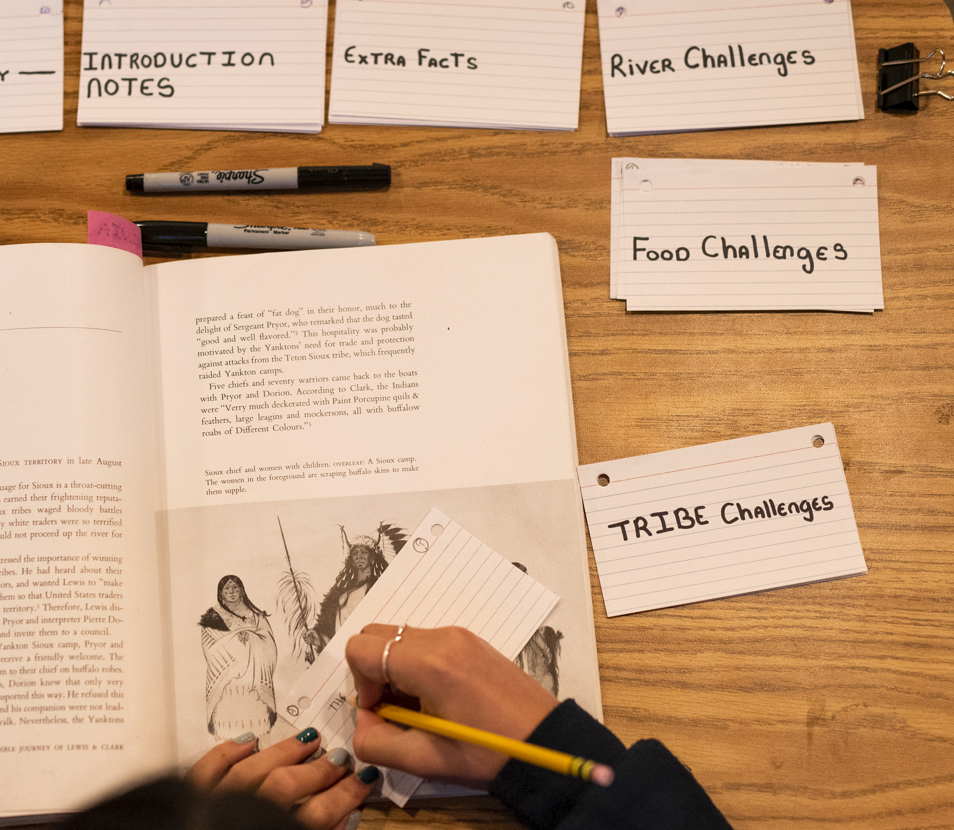Hyla Stories
Behold: The humble yet mighty notecard

They may be plain and simple, but Jennifer will tell you that notecards are a mighty tool for students as they advance from chronological to conceptual understandings of history. In her Humanities class, 6th graders use the notecard method to create research essays using a thesis statement and body paragraphs. Before writing begins, students use notecards to build the structure of their essays: they capture research, organize ideas, and analyze historical concepts to prove their thesis statements.
“The coolest thing with this approach is that it’s so tangible,” says Jennifer. “They can take their facts and physically move them around to the right pile to make their argument as strong as possible. As a teacher, I love this method because it’s like looking inside their brains. The notecards externalize their thinking so I can see exactly where they are and where I can jump in to support them.” Jennifer also describes this essay structure as “endlessly adaptable,” and therefore a tool students will carry with them throughout their schooling, expanding or contracting the structure based on the evidence they’ve gathered and the complexity of their thesis statements.
As part of the combined History and Language Arts unit on the Lewis & Clark expedition, student research is based on a common text they all read, as well as individually selected primary and secondary sources to explore their topics. While practicing proper citation techniques and how to avoid accidental plagiarism during research, students also learn that every source has a bias. For Jennifer, this is one of the most important lessons she can impart: that history is never just one perspective and that there are a plurality of voices, experiences, and narratives that must be sought out, heard, and understood.
Next week students will transform their note card categories into written outlines where they can add “clarifying sentences” to apply their own analysis and interpretation (rather than merely regurgitate facts). Jennifer describes this unit as “foundational scaffolding for future work.” Just as the essay structure paves the way for the more complex and abstract essay writing moving forward, the critical thought and analysis of the subject matter requires an increasingly complex understanding of the past and the contradictions within American history.

